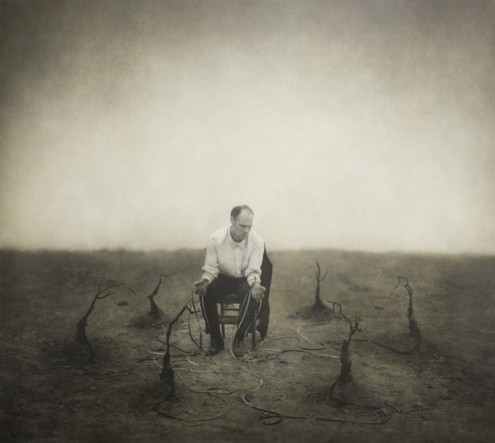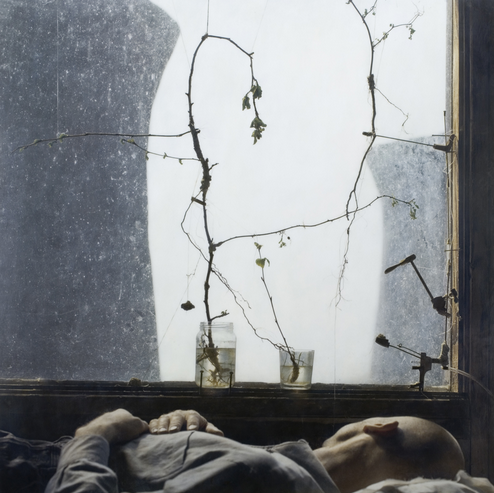In 2007, I was living in Shanghai and decided to come back to the US for a visit to see my family in New York. I also passed through Chicago to attend the law school commencement of a cousin living there. Trudging through the winter in Chicago was actually fun (my cousin graduated midyear). I had some free time during the trip and visited the Catherine Edelman Gallery in River North, where I first saw the works of Robert and Shana ParkeHarrison.
I was taken with the worlds the ParkeHarrison’s depicted in their bleak photographic works – the environment suffering greatly, often with an everyman trying to help heal some of the ills that have befallen Mother Nature.

Earth Elegies by Robert and Shana ParkeHarrison (from the artists’ website)
The ParkeHarrisons became one of my favorites from that day onwards. Their statement is one of alarm, concern and warning of the world we live in and where it may lead:
We create works in response to the ever-bleakening relationship linking humans, technology, and nature. These works feature an ambiguous narrative that offers insight into the dilemma posed by science and technology’s failed promise to fix our problems, provide explanations, and furnish certainty pertaining to the human condition. Strange scenes of hybridizing forces, swarming elements, and bleeding overabundance portray Nature unleashed by technology and the human hand.
Rich colors and surrealistic imagery merge to reveal the poetic roots of the works on display. The use of color is intentional but abstract; proportion and space are compositional rather than natural; movement is blurred; objects and people juxtaposed as if by chance in a visual improvisation that unfolds choreographically. At once formally arresting and immeasurably loaded with sensations—this work attempts to provide powerful impact both visually and viscerally.
– Robert and Shana ParkeHarrison (as posted on the artists’ website)
While their artistic statement expresses great concern of a potentially apocalyptic future, the ambiguity in their statement also points to the ability to correct our course and become better stewards of the land. On that day in Chicago, I was particularly taken with Gray Dawn, a dreary, contemplative work. Our everyman lays on a bed, asleep still or waking we do not know, with a dirty window in front of him and a scene outside dominated by a power plant or industrial facility. However, there are signs of life, of Mother Nature, as plant trimmings sprouting in the foreground point to another dawn.

Gray Dawn by Robert and Shana ParkeHarrison (from the Catherine Edeleman Gallery website)
The ParkeHarrisons are well represented by major galleries in New York, Chicago, and Colorado and their works have been included in the permanent collections of institutions including the Whitney, the National Museum of American Art in Washington, DC and the Museum of Arts in Boston. If you have a chance to see their creations I highly recommend it.